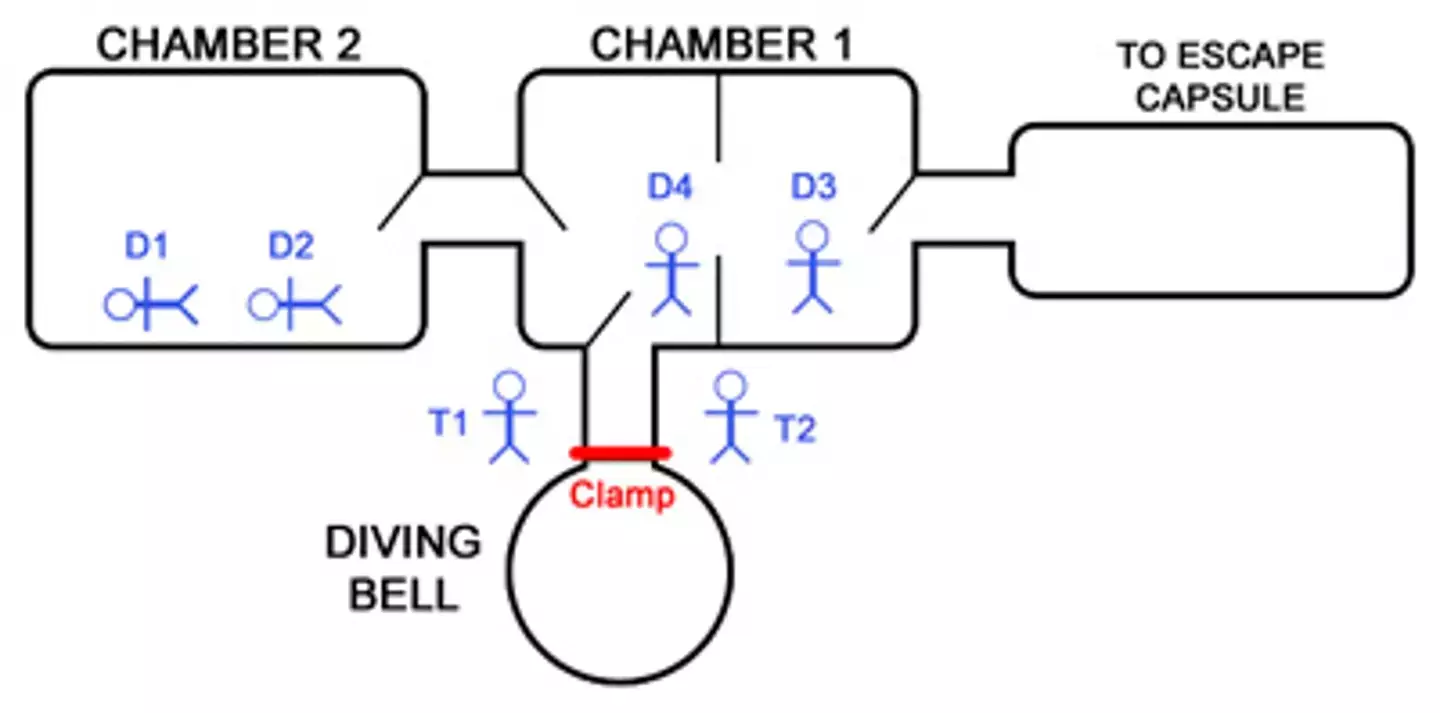The Byford Dolphin tragedy claimed the lives of five people on 5 November 1983
A horrifying simulation shows what happened when five divers suffered the most gruesome death imaginable.
The tragedy claimed the lives of four divers and one crew member aboard the Byford Dolphin, a semi-submersible oil rig used in the North Sea on 5 November 1983.
Working as saturation divers at the time, the group were required to carry out construction work on oil rigs, around nine atmospheres/90 meters deep in the ocean.

The Byford Dolphin tragedy claimed the lives of five people on 5 November, 1983 (Wikimedia Commons/Josef Pavlik)
Saturation diving requires the use of a diving bell, a chamber that transports divers between the worksite and a pressurised living chamber on the rig.
However, due to a mechanical failure that was later found to have been caused by faulty equipment, it all went terribly wrong.
The diving bell was released too soon, which caused a massive pressure drop from nine atmospheres to one.
The human body is not equipped to handle such a dramatic change in pressure, and the divers, who were inside the diving bell and transfer chamber, were exposed to this lethal pressure.
The rapid decompression violently expelled one diver from the bell, while others were killed almost instantly from the physical trauma caused by the pressure change.

Here’s a horrifying simulation of what happened (Wikimedia Commons/YouTube/Storified)
British divers Roy Lucas and Edwin Arthur Coward and Norwegian divers Bjorn Giaver Bergersen and Truls Hellevik all died in the incident, along with British tender William Crammond.
YouTube channel Storified has provided a simulation of what happened on the day, and it’s truly terrifying.
Describing what happened, the video explains: “The diving bell disconnected before the chamber doors fully closed, releasing an explosive depressurisation.
“The air pressure inside the bell instantly shifted from nine atmospheres – the pressure experienced while 297 feet below the water – to one atmosphere, the average air pressure on the surface.
“The explosive rush of air out of the chamber sent the heavy diving bell flying. The diving bell struck Crammond and Saunders, critically wounding them.
“The fate of the four divers inside was far worse. Lucas, Coward and Bergersen’s blood ‘boiled’ instantly in their bodies as enormous amounts of dissolved nitrogen suddenly returned to their gaseous state. The divers died instantly.
“Hellevik suffered the worst death since he was closest to the connecting door. The pressure equalisation caused the door to chamber one to partially jam, causing Hellevik’s body to be forced through a small 24-inch crescent-shaped opening with a tremendous force of 25 tons.
“The sheer pressure resulted in the horrific outcome of his internal organs bursting through his body through the opening.”
In the years gone by, the Byford Dolphin disaster has been used as a reminder of the importance of safety standards in the offshore oil industry.
Featured Image Credit: Wikimedia Commons/YouTube/Storified



